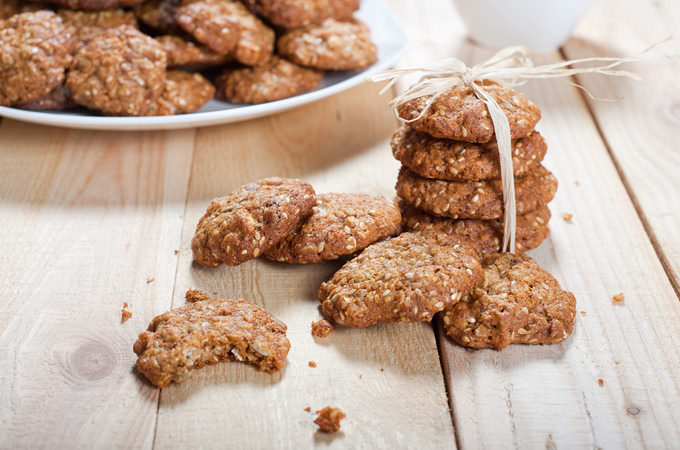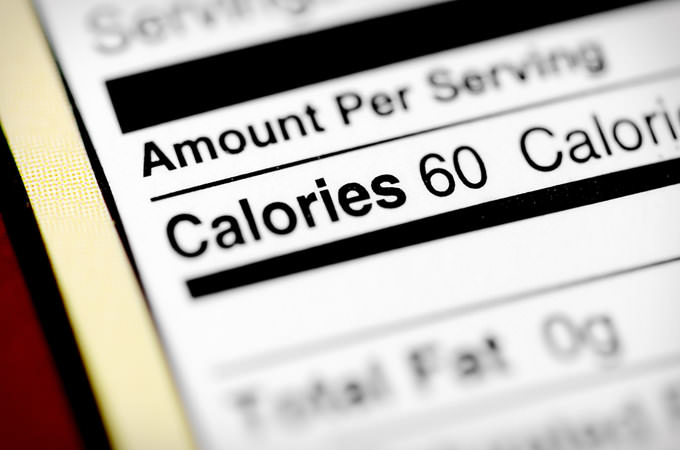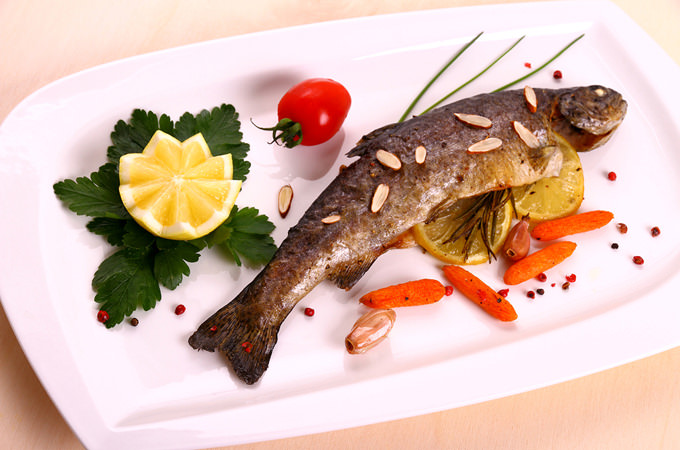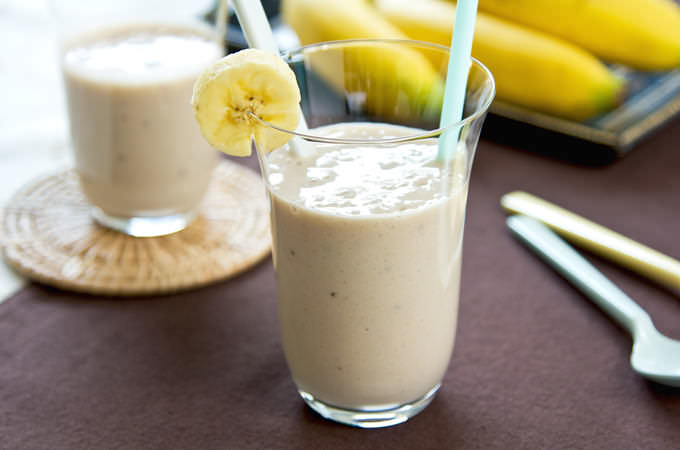
Fad diets come and fad diets go, but there will always a new one to replace those that fail miserably, either because they’re just plain nuts (all-cabbage diet, anyone?) or because they’re too complicated, expensive, or result in side effects that are worse than a little fat around the middle.
Here are ten fad diets that aren’t terribly kooky and that offer some health benefits beyond weight loss. However, as with any diet, it’s always best to talk to your physician before starting a weight loss program.
1. The Fast Diet
This diet isn’t named the Fast Diet because it’s a quick fix for weight loss, but rather because it involves more or less fasting for two nonconsecutive days each week. The theory behind this diet is that by fasting regularly, your body is fooled into thinking that it’s starving and goes into maintenance mode, during which it burns energy from existing fat stores.
During the five normal-eating days, dieters are encouraged to eat lean proteins and foods that are low on the glycemic index, such as carrots and strawberries, in order to maintain optimal blood sugar and insulin levels.
During the two “fasting” days, normal calorie consumption is reduced by 75 percent, which equals about 600 calories for men and 500 for women. During the fasting days, it’s essential to eat lean protein meats, nuts and legumes, as well as low-glycemic foods. The Fast Diet discourages eating at restaurants, which is often a major factor in weight gain.
Not only will you likely lose weight on this diet, but it’s also good for your heart health and for maintaining low blood pressure, especially if you choose the right foods during your two “fasting” days. Women who are pregnant or trying conceive and anyone who has Type 1 diabetes should consult with a physician before embarking on this diet.

2. The DASH Diet
DASH stands for “Dietary Approaches to Stop Hypertension.” While the DASH Diet wasn’t designed for weight loss, its focus on healthy food pretty much guarantees that if you follow the diet and get plenty of exercise, you will lose weight.
In fact, a four-month study of this diet found that, even though it wasn’t the purpose of the diet, adherents lost an average of 19 pounds while on it.
The real health benefits in this diet include preventing and lowering high blood pressure and combating heart disease and stroke.
When embarking on the DASH diet, you determine the calories your body needs each day based on your activity level, your age and your weight goal. Getting your allotted calories from healthy foods is essential, and that alone makes it a diet that will not only help you drop pounds, but will give you good health to enjoy your fit body.
The main restrictions in the DASH diet are fat, sugar and salt, which, unfortunately, are the very things that make food so enjoyable. The emphasis is instead on eating lean proteins, lots of fiber and foods that are full of antioxidants, like fish, fruits and vegetables. Potassium, calcium and Vitamin B-12 intakes are also promoted to ensure bone, muscle and blood vessel health, as well as improve cell metabolism.

3. The TLC Diet
The Therapeutic Lifestyle Changes (TLC) diet was designed by the National Institute of Health, and it’s endorsed by the American Heart Association because it can significantly reduce your risk of cardiovascular disease by lowering your “bad” LDL cholesterol by up to 10 percent in just six weeks.
The first step is choosing your target daily calorie intake based on your preferred outcome, such as weight loss or lowered cholesterol. The target caloric intake for weight loss is 1600 for men and 1200 for women.
The premise of the diet is that by cutting back on fat, especially of the saturated variety, and increasing your fiber intake, you will lower your cholesterol and lose weight. Your saturated fat intake must be less than 7 percent of the calories consumed, and your fiber intake should be between 10 and 25 grams daily.
Therefore, this diet calls for less fatty dairy and more fruits and vegetables, which is universally accepted by medical professionals as a heart-healthy way of eating to lose weight. Sample meal plans are available for the TLC diet, but the rest is up to you. Exercising for 30 minutes most days of the week can help speed up the outcomes of weight loss and lowered cholesterol.

4. The Cookie Diet
Started in 1975, the Cookie Diet is still going strong almost 40 years later. The claim is that you can lose 10 to 15 pounds a month while consuming cookies during the day and eating a low-calorie, healthy meal at night.
But don’t get too excited just yet. The cookies in question aren’t your store-bought Oreos and ginger snaps. Rather, they’re a specially-designed concoction that contains hunger control ingredients and costs $49.95 for a week’s worth of cookies.
The cookies are eaten several times daily, according to a prescribed schedule, and followed by a homemade, healthy dinner of your choice that has between 500 and 700 calories.
While the Cookie Diet meets most of the accepted nutritional guidelines, taking a multivitamin while you’re on it is essential to ensure you get enough potassium, calcium and Vitamin D. Additionally, this diet may not provide you with the fiber you need to stay regular, so making sure you eat plenty of fiber at suppertime is essential for making this diet good for your health as well as for your weight.
The cookies for this diet are available at GNC stores, or they can be purchased online. A starter kit for $220 includes a month’s supply of cookies, a multivitamin, a starter guide and a cookbook for ensuring your evening meals are healthy and stay within the recommended calorie allowance.

5. The Ornish Diet
Developed by Dean Ornish, a professor of medicine at the University of California in San Francisco, The Ornish Diet is a holistic approach to weight loss and disease prevention.
The approach includes nutrition, exercise, emotional support and the management of stress to help dieters reach their weight and health goals. The tag line for this diet says it all: “Feel better, live longer, lose weight and gain health.”
In addition to helping you lose weight, The Ornish Diet can help prevent or reverse diabetes and heart disease, and can help prevent high blood pressure and certain types of cancers, including breast and prostate cancer.
It’s the approach that makes this diet successful and so good for your health. All foods are sorted into five groups, with the first group being the healthiest and the last group being the least healthy. The idea is that you replace foods in higher groups with foods in lower groups, which means that everything you eat is a concrete, conscious choice with stated alternatives.
A large part of The Ornish Diet is exercise, support and stress management. Because stress affects our overall health and our eating habits, maintaining low stress levels through emotional support and exercise helps adherents make better choices to lose weight and improve the essential functions of the body.

6. Volumetrics
Volumetrics is more a way of life than a diet, but it’s a fad nonetheless, possibly because it tends to work. You can lose up to two pounds a week by following the volumetrics approach to eating.
The premise of volumetrics is that if you consume more low-density foods that have fewer calories and higher weight volume, you will feel satisfied while reducing your caloric intake and losing weight.
The approach to eating is similar to the Ornish Diet, in that all food will fall into one of four categories: Very low density, such as fruits and vegetables; low density, including grains and meats; medium density, like cheese and bread; and high density, including candy, chips and butter.
Swapping out medium- and high-density foods for low and very low density foods will ensure you’re eating more food to feel satisfied, but getting fewer calories. Plus, low-density foods are generally less processed and healthier, so in addition to losing weight, you’ll improve your overall health, including your cardiovascular system.
“The Ultimate Volumetrics Diet,” published by William Morrow Cookbooks and sold for $16.99, provides you with heart-healthy recipes that mostly include low-density foods. As always, exercising most days of the week and incorporating strength training can help you lose fat while improving muscle tone as you lose weight.

7. The Master Cleanse (The Lemonade Diet)
This diet definitely isn’t at the top of the list of healthy diets, but it’s short-lived, and certainly won’t hurt you if you use it infrequently to cleanse toxins from your body and lose a few extra pounds quickly, before they snowball into obesity.
This diet is designed for very fast weight loss to the tune of 20 pounds in ten days.
The Master Cleanse involves ten days of absolutely no solid foods and some strange liquid concoctions that flush toxins from your body to help it function better and rev up your metabolism.
In the morning, you drink four cups of salt water, and throughout the day, you drink 12 glasses of homemade “lemonade,” which contains lemon juice, maple syrup, cayenne pepper and water and tastes a bit like a sports drink. At night, you drink a cup of laxative tea.
Some of the side effects that may occur when you’re on the Master Cleanse might make it seem incredibly unhealthy, but many are due to your body adjusting to the lack of toxins and the fact that there’s cayenne in your daily drinks. Side effects include burning while having a bowel movement, fatigue from the lack of calories, aches and pains, nausea and irritability.
This is an ideal program for jump-starting your weight loss and getting motivated to follow your cleanse with a healthy diet and plenty of exercise that can help you realize your weight loss goals.

8. The Zone Diet
The Zone Diet was created by a biochemist by the name of Barry Sears, who believes that the key to successful weight loss lies in the proper balance of hormones and blood sugar.
Elevated levels of insulin and other hormones that promote inflammation can cause weight gain, and balancing out these chemicals will promote weight loss.
To follow the Zone Diet, you’ll need to eat the right foods in the right proportions and maintain a daily caloric intake of 1500 calories for men and 1200 calories for women, spread out over three meals and two snacks.
Each meal and snack should be comprised of 40 percent carbohydrates, 30 percent protein and 30 percent fat. To make this easier, Sears recommends dividing your plate at each meal into three sections. The first section is for low-fat protein, such as fish or chicken, in a serving that fits in the palm of your hand. The other two sections are for fruits and vegetables and a healthy fat, such as an avocado or a small handful of almonds.
Recent studies have shown that this diet may be particularly successful in lowering your “bad” LDL cholesterol levels, as well as helping you to lose belly fat that promotes heart disease and high blood pressure.

9. The MediFast Diet
This is another diet that requires you to consume special-order food, in this case MediFast products like shakes, bars and soups. The cost for the food is $315 for a month’s supply and $165 for two weeks’ worth.
However, while on this diet, you’re only eating one home-cooked meal a day, so you may save on your grocery bill if you don’t have a lot of other mouths to feed.
The MediFast Diet can help you lose up to five pounds a week with the “5 and 1” plan. Five of your daily meals are 100-calorie servings of MediFast products, and one meal includes 5 ounces of lean protein, such as fish or skinless chicken, along with three servings of non-starch vegetables.
While some diets of this type can leave you with nutritional deficiencies, the MediFast plan meets or exceeds most of the recommended daily nutrition guidelines for most nutrients, making it a healthy way to lose weight.
Once you reach your target weight, you will begin the process of weaning yourself from the MediFast products and begin eating regular meals. But keep in mind that if you go right back to your old ways, you will gain the weight back faster than you can say “MediFast.”

10. Abs Diet
If you’re looking to lose belly fat and tighten up your abs, the Abs Diet may be just the thing to help you reach your goal. You can lose 12 pound of belly fat in two weeks and sculpt a six-pack in six weeks on this strict program.
The Abs Diet is based on eating twelve foods that are purported to provide your body with all of the vitamins, minerals and fiber it needs for good health and for building lean muscle and burning fat.
The diet involves eating six meals every day, helping you maintain your energy level and feel satisfied so that you don’t binge. Each meal includes a protein to promote muscle growth and rev up your metabolism to burn more fat.
This diet comes with an exercise plan that includes weight training three times a week, abdominal exercises twice a week and a weekly cardio routine. The membership fee for the diet, which includes meal plans, recipes and a workout schedule, as well as support, is $14.95 a month or $34.95 for three months.
Although the diet allows no refined carbs, saturated or trans fats or sugar, it does provide a cheat day during which you can, well, cheat, which can help motivate you to stay on target the rest of the time.

